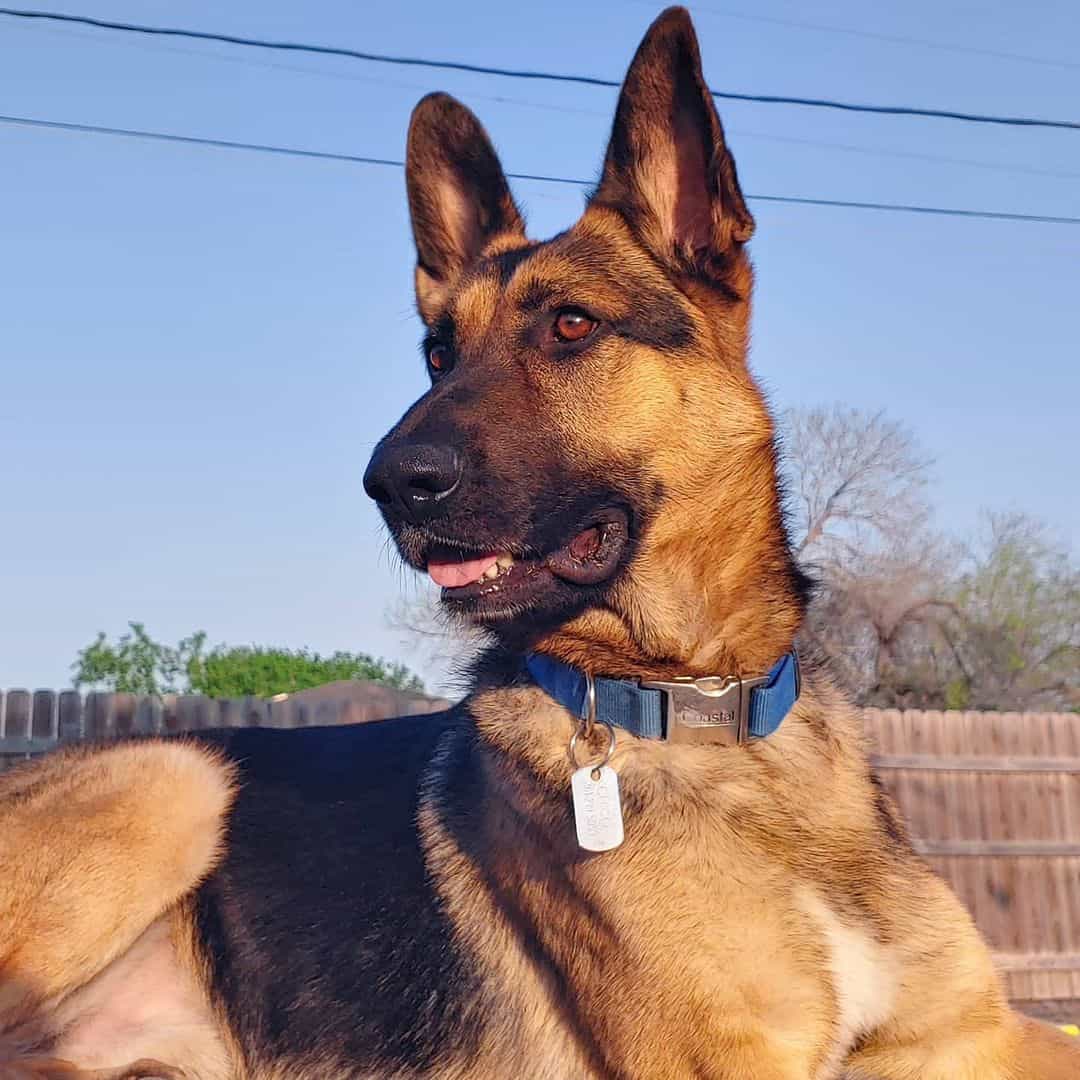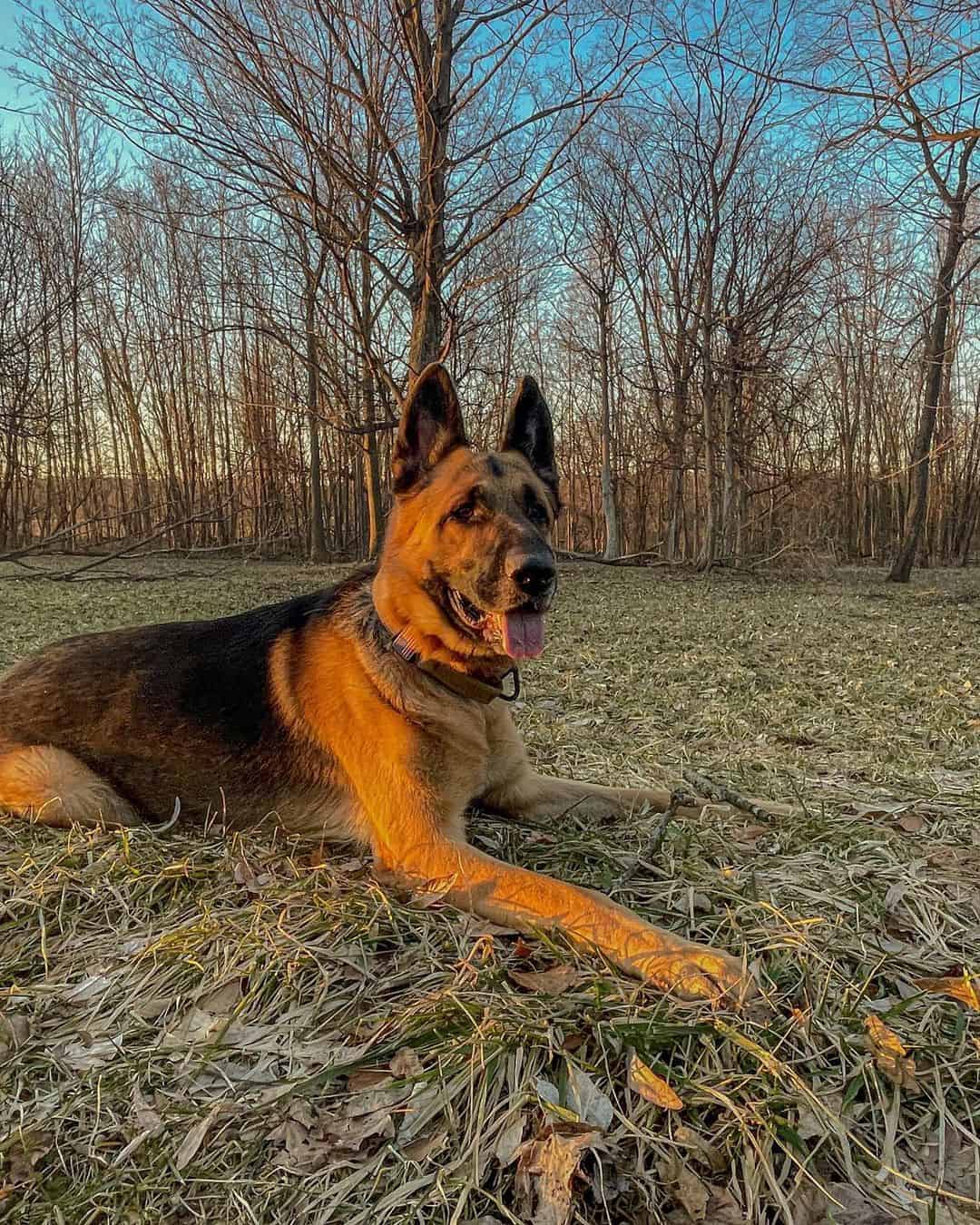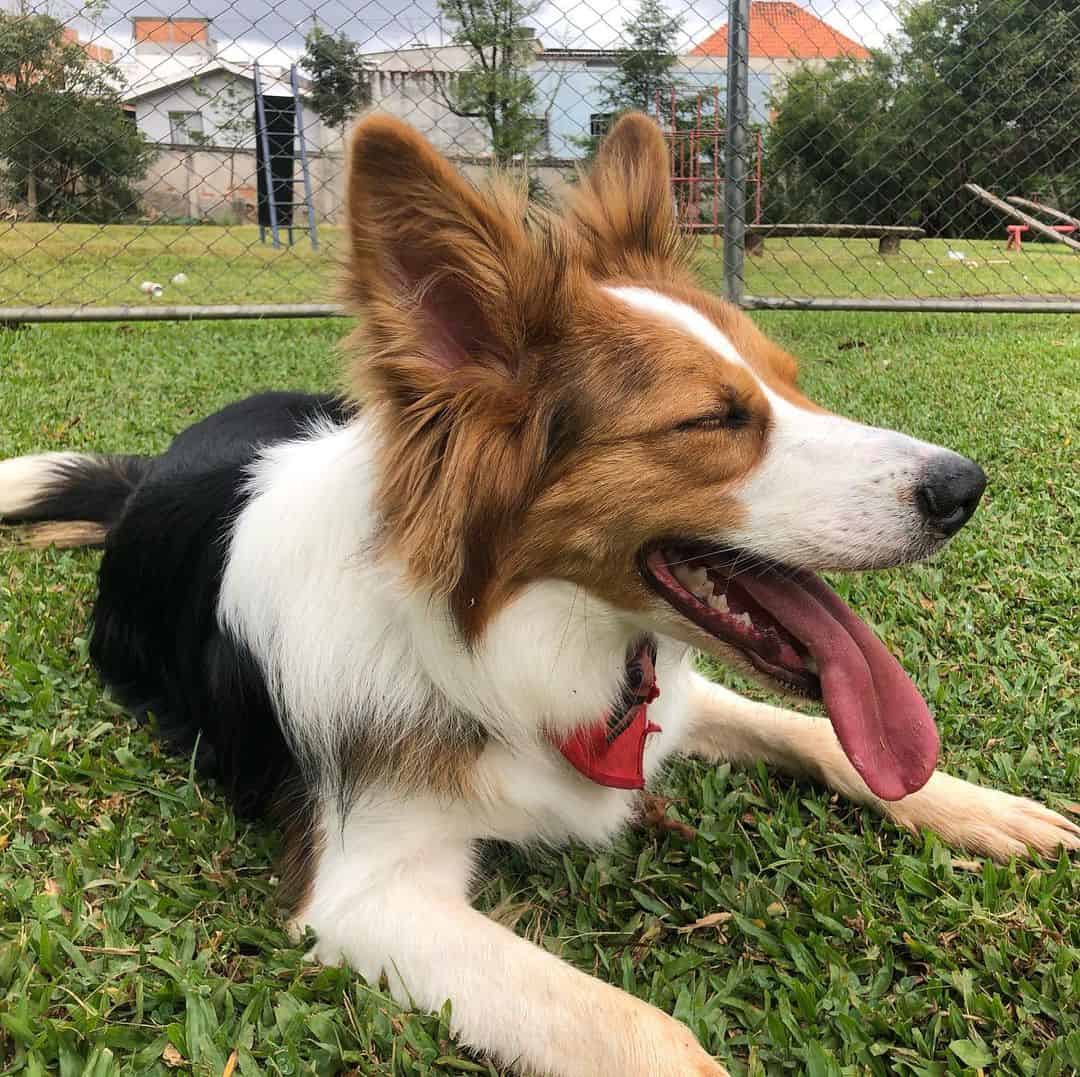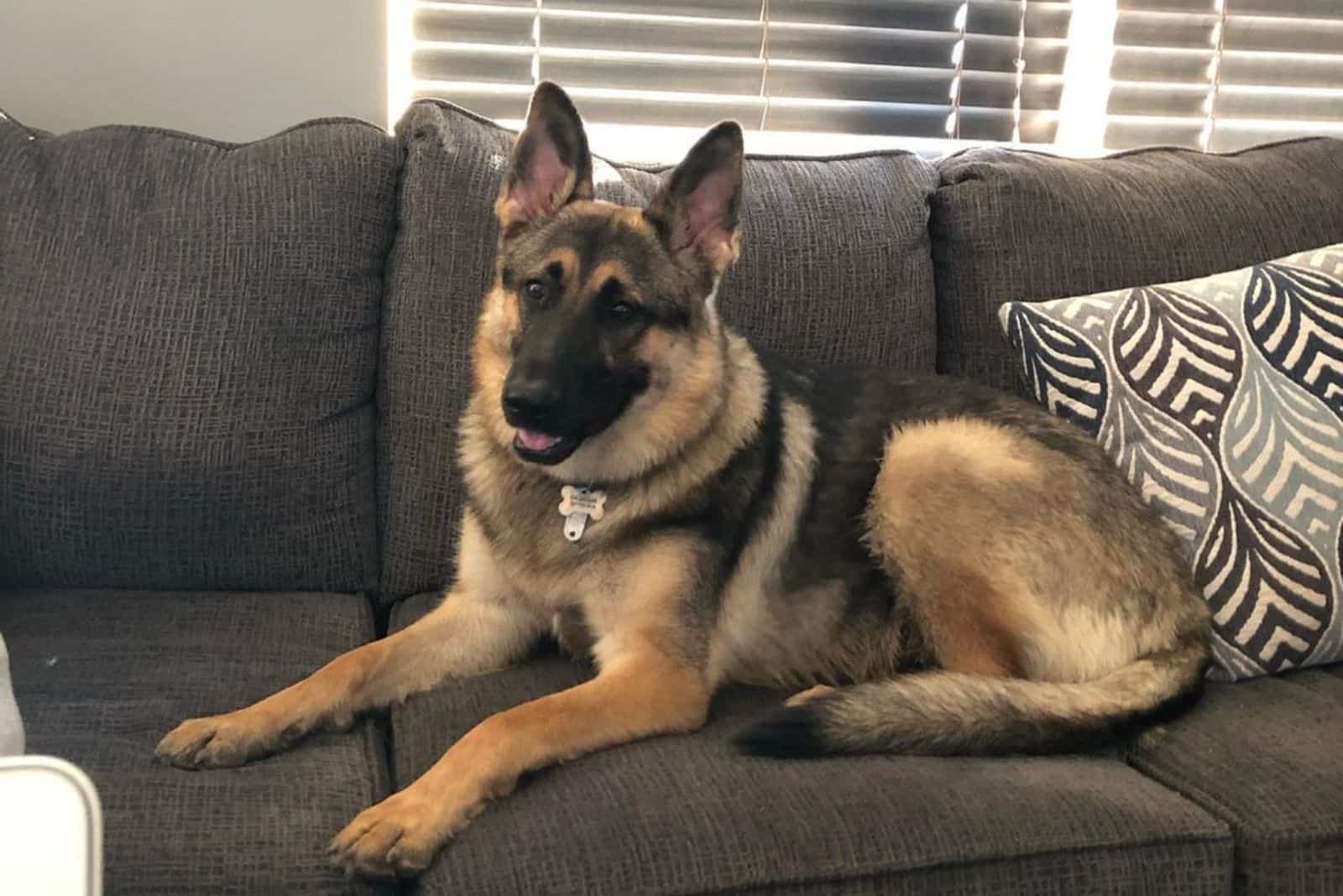Despite the name, there is no saddle on the back of this GSD, but the saddleback German shepherd is a classic among the breed’s coat patterns. The only thing it has in common with a horse is the distribution of colors on the body, so at least it is not a far-fetched description.
Regardless of it being a very common look for the GSD, the genetic process that produces this motif is pretty complex. If you ask me, knowing why or how your German shepherd dog ended up with it is a fun conversation piece, and every existing or potential GSD owner should know it.
Stay here a while longer to find out the machinations behind an almost trademark look among all dog breeds that commands respect and sets a standard for the German shepherd dog itself.
The Looks And Genetic Voyage Of A Saddleback German Shepherd

With more emphasis being placed on designer breeds with uncommon coat colors and patterns, the saddleback German shepherd surely has its place among the legends. The image of this breed is engrained in our minds, so this coat “design” is the first that comes to mind.
Simply put, the red (tan) base coat that covers the largest portion of the German shepherd’s body is embellished with a black saddle-shaped patch that extends from the withers to the tip of the tail. Because it is the most basic GSD color, it is also called black and tan.
The pattern is rarely visible at birth, and the pulling back of the black saddle-patch progresses with age. Younger dogs can even have some “stray” tan hair across the black part of their bodies.
In the vast majority of cases, a puppy will be born with tan points that gradually become darker and move from the head and neck towards the shoulders, back, sides, and tail, until ultimately becoming a black saddle.
No other body part is covered by the black pigment (eumelanin) in adult German shepherds, meaning there is a well-defined genetic chain of events that produces this pattern. The melanistic mask (black mask on the face) has a separate locus that determines its existence.
Need more German shepherd colors to choose from? Have a look at these fifteen GSD colors that will make it even harder for you to decide.
The Agouti Signaling Protein Is A-OK
As with most combinations of colors in specific places, the Agouti gene is the driving force behind the saddleback GSD. The main role of the Agouti Signaling Protein (ASIP) is to produce or disable production of the two main pigments that comprise every dog’s coat color.
A second role, more relevant for what we are talking about today, is the distribution of either pigment across the body.
Red pigment (pheomelanin) is eumelanin’s partner in crime, and despite rarely being expressed in its original color, it produces a vast palette of colors ranging from cream to fox-red. Keep in mind that the black pigment can also produce more than just black.
An example of a black variation is the increasingly popular blue German shepherd, which is a dilution of eumelanin that resembles a shade of blue. Clearly, the dog is not actually blue, but the bluish undertones of the gray coat make it appear so.
Yes, the ASIP gene is responsible for a saddleback coat pattern, but there are several other locations on a gene (locus/loci) that are involved in the sequence of events that lead up to this “final touch”.
Saddleback German Shepherd Starts With E

A phenotype is essentially the visual manifestation of a genotype. The latter is simply the way genetic code is set up to produce a color or pattern in a dog’s coat. A phenotype is what you see, while genotype represents the make-up of it.
Every locus is home to two genes and their variants (alleles). Depending on which two make a pair on it, different colors and patterns are created. The first locus, that determines whether red pigment will be produced, is the E locus.
With the saddleback German shepherd, the presence of the dominant E allele on the E locus means that eumelanin will be produced, and the next decision will depend on the K locus.
Since it has a dominant black gene (Kᴮ), there needs to be a pair of recessive genes (kʸ/ky) to get the saddleback GSD base coat color. The two kʸ alleles will then pass on the responsibility to the A locus, where the ASIP gene and MC1R gene will create the pattern.
This locus (A) is known for its numerous alleles, so there is a particular order of dominance, as with every other location on a gene. The most dominant allele is aʸ, followed by aʷ, aᵗ, and a as the least dominant.
Because the saddleback pattern is actually a tan point gene (aᵗ), a combination of aᵗ/aᵗ or aᵗ/a will yield the desired pigment distribution. From here on, there are two loci that will influence the sequence and coat color.
B Is For Black, D Is For Dark
Two options remain at this point. The previously mentioned pairs of alleles lead to the B and D locus for information on what to do next. These two, practically, deliberate together as to how much and where the red and black pigment will be distributed.
The B locus has a dominant (B) and recessive (b) allele, while the D locus has the dominant (D) and recessive (d) genes. A combination of B/B or B/b will yield a black with tan points coat. The exact same pairing on the D locus (D/D or D/d) has an identical outcome.
So, where is the saddleback? Well, recent research has found that the RALY gene mutation (multifunctional RNA-binding protein) has been associated with saddleback coat patterns. Without its presence, the saddleback pattern does not appear.
It (the RALY gene) has a dominant modifier, which means it will have precedence over other A locus alleles if it does occur. The pairing of Aˢ/Aˢ will express the phenotype, which means both parents passed on the blacksaddle gene to their offspring.
Due to the dominance of the RALY gene mutation, only one parent is enough for a chance of the puppy GSD to have a saddleback phenotype. So, an N/Aˢ pairing will theoretically result in only fifty percent of the offspring having the saddleback pattern.
Note that these assumptions are made based on the prerequisite sequences happening in the specified order (E locus, K locus, A locus, B/D locus).
There Are Other Breeds With Saddleback Patterns

Saddleback German shepherds are by no means an exclusive item in the dog world, or even the breed itself. Various other dog breeds, such as Siberian Huskies, Treeing Walker Coonhounds, Beagles, Border Collies, Corgi, etc.
The oldest breed known to sport this combination of saddleback with a tan base coat is the Redbone Coonhound. Its name “Saddleback” was derived from the pattern that black pigmented hairs formed on the back, sides, and tail, so they could be a distant relative of the GSD.
For this reason, there are plenty of combos, like GSD x Corgi, GSD x Coonhound, GSD x Collie, and other German shepherd mixes.
Genetic Tests Can Reveal What Your GSD Puppy’s Coat Will Look Like
German shepherd breeders perform genetic tests for a variety of reasons, but mainly to see whether the dams and sires have any genetic diseases that their offspring might inherit.
However, commercial genetic tests are nowadays able to detect gene mutations and the pairing of alleles on different loci. Even when only one parent has a saddleback, a portion of the litter can inherit the RALY gene and produce saddleback in the future.
The only condition for a guaranteed saddleback German shepherd is that the other parent has this specific mutation, too. Still, considering how common of a coat it is, the RALY gene mutation is deeply embedded in the breed and any deviations from it are considered genetic mutations as well.
Summary
Do not let anyone tell you that your saddleback German shepherd is “common”. True, the pattern is not rare by any stretch of the imagination, but we have to appreciate the genetic process of the phenotype.
The abundance of veterinary laboratories that perform genetic tests for coat colors and patterns means you can easily buy a package that includes all the necessary tools for taking a sample and sending it back for analysis.
If you are not curious about it, it is still something you are free to do and brag about. Not many dog owners can boast of a framed genetic test in their home, but you could.
